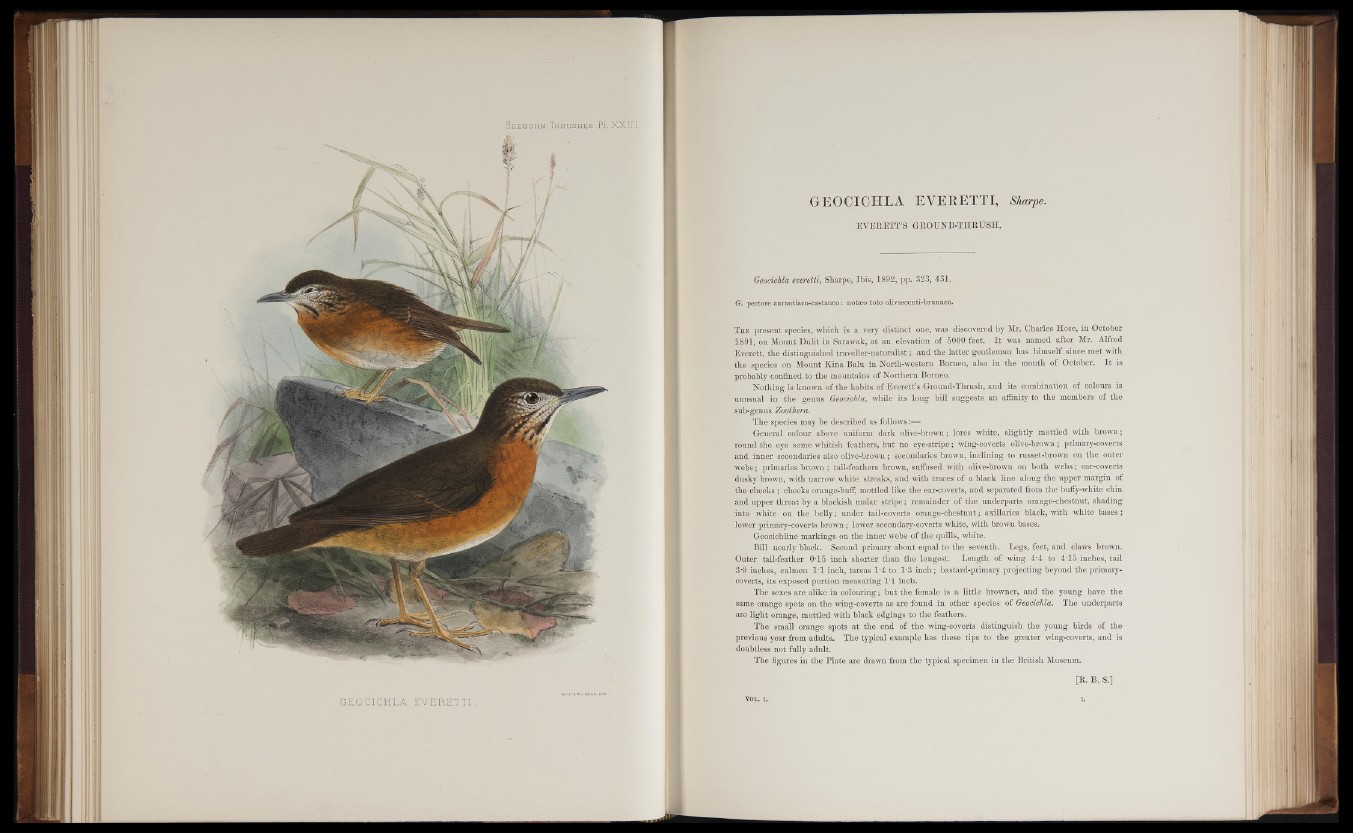
G E 0C 1Q H L A EV E-RETT I .
GEOCICHLA EVEEETTI, Sharpe.
EVERETT’S GROUND-THRTJSH.
Geocichla everetti, Sharpe, Ibis, 1892, pp. 323, 431.
G. pectore aurantiaco-castaneo: notseo toto olivascenti-brurmeo.
T he present species, which is a very distinct one, was discovered by Mr. Charles Hose, in October
1891, on Mount Dulit in Sarawak, at an elevation of 5000 feet. It was named after Mr. Alfred
Everett, the distinguished traveller-naturalist; and the latter gentleman has himself since met with
the species on Mount Kina Balu in North-western Borneo, also in the month of October. It is
probably confined to_the mountains of Northern Borneo.
Nothing is known of the habits of Everett’s Ground-Thrush, and its combination of colours is
unusual in the genus Geocichla, while its long bill suggests an affinity to the members of the
sub-genus Zoothera.
The species .may be described as follows:—-
General colour above uniform dark olive-brown; lores white, slightly mottled with brown;
round the eye Some whitish feathers, but no eye-stripe; wirig-coverts olive-brown ; primary-coverts
and inner secondaries also olive-brown; secondaries brown, inclining to russet-brown on the outer
webs • primaries brown; tail-feathers brown, suffused with olive-brown on both webs; ear-coverts
dusky brown, with narrow white streaks, and with traces of a black line along the upper margin of
the cheeks ; cheeks orange-buff, mottled like the ear-coverts, and separated from the buffy-white chin
and upper throat by a blackish malar stripe; remainder of the underparts orange-chestnut, shading
into white on the belly; under tail-coverts orange-chestnut; axillaries black, with white bases ;
lower primary-coverts brown; lower secondary-coverts white, with brown bases.
Geocichline markings on the inner webs of the quills, white.
Bill nearly black. Second primary about equal to the seventh. Legs, feet, and claws brown.
Outer tail-feather 0T6 inch shorter than the longest. Length of wing 4*4 to 4T5 inches, tail
3*0 inches, culmen IT inch, tarsus 1*4 to 1*3 inch; bastard-primary projecting beyond the primary-
coverts, its exposed portion measuring IT inch.
The sexes are alike in colouring; but the female is a little browner, and the young have the
same orange spots on the wing-coverts as are found in other species of Geocichla. The underparts
are light orange, mottled with black edgings to the feathers.
The small orange spots at the end of the wing-coverts distinguish the young birds of the
previous year from adults. The typical example has these tips to the greater wing-coverts, and is
doubtless not fully adult.
The figures in the Plate are drawn from the typical specimen in the British Museum.
[B. B. S.]
VOL. I . L